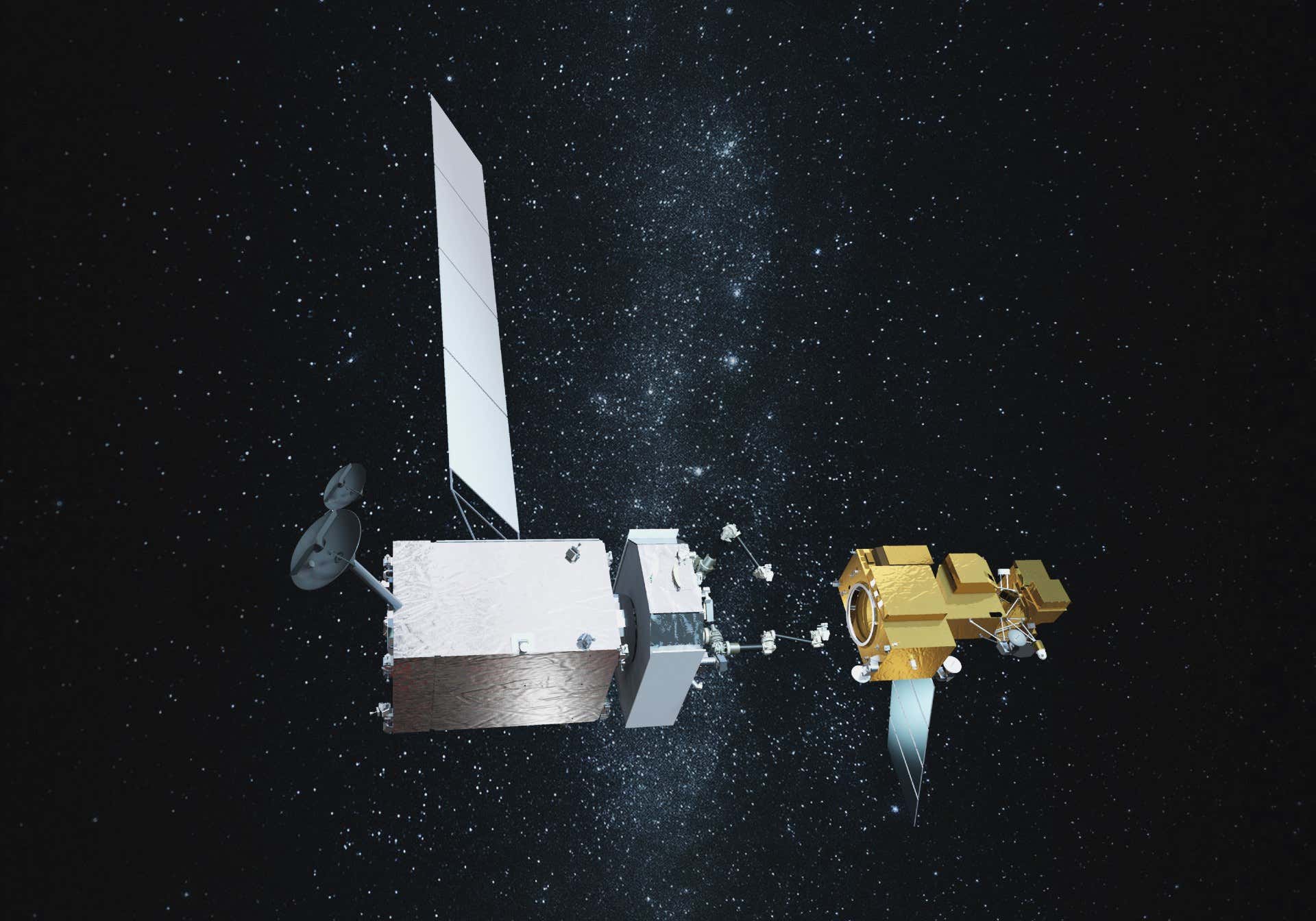BLUF:
As Shijian-21’s recent actions demonstrate, there is a pressing need for the United States to be able to defend its assets in distant orbit. It’s likely we could see similar shows of force in the near term as Space Force responds to other nations’ demonstrations of “killer” satellite capabilities.
A Chinese Satellite Just Grappled Another And Pulled It Out Of Orbit.
A Chinese satellite was observed grabbing another satellite and pulling it out of its normal geosynchronous orbit and into a “super-graveyard drift orbit.” The maneuver raises questions about the potential applications of these types of satellites designed to maneuver close to other satellites for inspection or manipulation and adds to growing concerns about China’s space program overall.
On January 22, China’s Shijian-21 satellite, or SJ-21, disappeared from its regular position in orbit during daylight hours when observations were difficult to make with optical telescopes. SJ-21 was then observed executing a “large maneuver” to bring it closely alongside another satellite, a dead BeiDou Navigation System satellite. SJ-21 then pulled the dead satellite out of its normal geosynchronous orbit and placed it a few hundred miles away in what is known as a graveyard orbit. These distant orbits are designated for defunct satellites at the end of their lives and are intended to reduce the risk of collision with operational assets.
Space Force has been increasingly turning to commercial space companies to provide a variety of data and services to boost its situational awareness, and to that end, Joint Task Force-Space Defense awarded Exoanalytic Solutions a contract in 2021 to provide space domain data. “Comms, data relay, remote sensing, and even ISR and some other things — [these] capabilities are increasingly available in the commercial market,” Space Force deputy Lt. Gen. David Thompson said last year.
SJ-21’s recent maneuver raises questions and concerns about these types of satellites and their potential for military use. Todd Harrison, director of CSIS’s Aerospace Project, told Breaking Defense that SJ-21’s actions present “more questions than answers,” adding that while we can observe the satellite’s actions, “the intent behind it and what China plans to do with this technology is a more subjective assessment.”
This isn’t the first time SJ-21 has made headlines with its questionable behavior. In November 2021, just a month after its launch, an unknown object was seen orbiting alongside SJ-21. At the time, Space Force designated the unidentified object as a spent apogee kick motor, but it was also reported that it might have been an experimental payload designed to test SJ-21’s ability to perform remote operations and manipulate other satellites.
Analyzing the potential applications of these dual-use satellites is difficult. As CASI notes, while SJ-21’s previous behaviors demonstrate “technology to potentially enable weapons or reconnaissance capabilities,” they are also perfectly in line with China’s peaceful economic and scientific goals in space, particularly related to debris removal.
Still, if SJ-21 can grab a dead satellite and move it out of orbit, there is likely little stopping it from doing the same thing to an operational one the American military depends upon. It’s important to note that the United States is also exploring on-orbit servicing capabilities that will likely prompt similar concerns from America’s competitors. Northrop Grumman is developing a satellite featuring a DARPA-made robotic arm for a planned launch in 2024 that is capable of “detailed inspections, relocations of client vehicles or simple repairs such as releasing a solar array that is stuck or an antenna that doesn’t deploy properly.”

Artwork for NASA’s OSAM-1, a robotic spacecraft equipped with the ability to grasp and relocate satellites.
The fact that China has these capabilities in orbit now underscores concerns the Pentagon has been voicing in recent years about China’s rapidly advancing space capabilities. James Dickinson, commander of United States Space Command, told Congress last year that Chinese satellites like SJ-21 and others “could be used in a future system for grappling other satellites.” As early as 2013, there have been reports of Chinese satellites using robotic arms to grab other satellites. A robotic arm launched aboard the Tianhe module of China’s Tiangong space station has displayed similar capabilities.
Those concerns aren’t unfounded. In another direct example of this potential threat, an American spy satellite was shadowed closely in 2020 by a Russian “space apparatus inspector” believed to have capabilities similar to SJ-21. Maneuvering one satellite close to another in orbit is a technologically complex proposition, and there is always the possibility of an unintentional collision occurring during one of these operations. There are also concerns about adversary satellites with more destructive capabilities such as high-powered microwaves or the ability to launch projectiles. Any satellite that has the ability to maneuver in close proximity to another could potentially carry out a variety of attacks on it such as jamming its transmissions, blinding its sensors, spraying aerosols on its solar panels and optics, physically manipulating it, or moving it out of orbit as in the case of Shijian-21’s recent operation.

An infographic from the Defense Intelligence Agency depicting a number of ways in which one satellite might attack another, including by acting as a kinetic kill vehicle.
With all of these developments, it’s no wonder Space Force recently expanded its Geosynchronous Space Situational Awareness Program aimed at keeping an eye on other satellites in the same orbit as SJ-21 where many of America’s critical early warning and spy satellites reside. Some Pentagon leadership have also argued that declassification of America’s space-based capabilities could help serve as a deterrent and boost support for Space Force.
As Shijian-21’s recent actions demonstrate, there is a pressing need for the United States to be able to defend its assets in distant orbit. It’s likely we could see similar shows of force in the near term as Space Force responds to other nations’ demonstrations of “killer” satellite capabilities.

